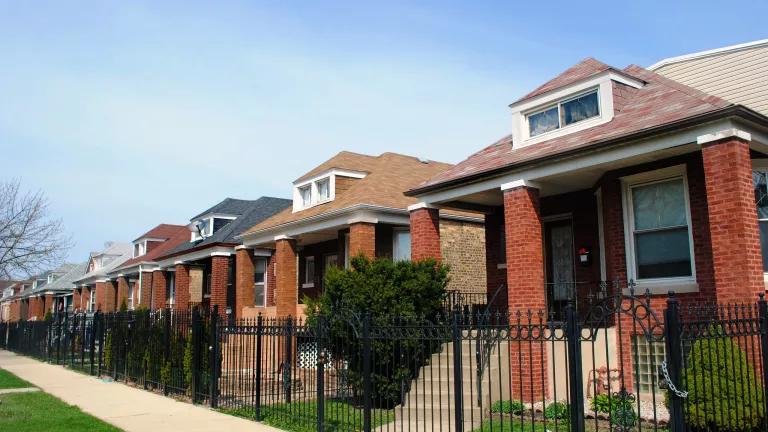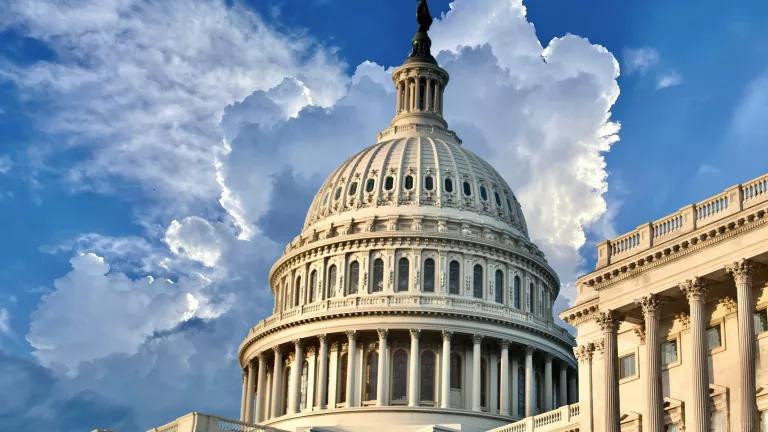Efficiency Could Ensure Total Emissions Decline After 2020

A new report offers a powerful argument for stepping up investment in energy efficiency to combat dangerous climate change, reduce other harmful pollution, and save consumers money while promoting strong economic growth.
The Energy Efficiency 2018 report, produced by the International Energy Agency, underscores the critical role that efficiency can play in helping us meet climate goals, a mission that has gained greater urgency in the wake of dire new warnings about the climate danger from a United Nations scientific panel.
Sadly, however, the report also spotlights our failure to fully take advantage of the cheapest and fastest way to reduce climate-altering emissions. Investment in energy efficiency has slowed in the United States, the IEA notes.
This under-investment has become glaringly apparent with the Trump administration’s short-sighted moves to roll back or slow down efficiency initiatives, even though efficiency has long enjoyed bipartisan support and has a proven record of success in cutting pollution and saving consumers money.
The cornerstone solution
The IEA recognizes the “significant economic, social and environmental benefits” of ramping up smarter energy use. The organization that works on behalf of 30-member nations found that efficiency alone could lead to greenhouse gas emissions to peaking before 2020, a key target of the Paris climate accord.
If countries took advantage of all available cost-effective energy efficiency opportunities between now and 2040, IEA says, we could achieve more than 40 percent of the agreement’s pollution reduction goals. Remarkably, that’s just from using existing technology.
The IEA, in fact, calls efficiency the cornerstone for a secure and sustainable energy future. It also found that efficiency gains could allow the world to extract twice as much economic value from the energy it uses compared to today. But the report also concluded that efficiency is only likely to deliver these benefits if governments take stronger policy action.
IEA’s findings come on the heels of an alarming report by the U.N.’s science-based Intergovernmental Panel on Climate Change (IPCC).
The IPCC report warns of devastating impacts to our health, our communities, our economy and our national security unless we take rapid and transformative action to limit warming to 1.5°C (2.7°F).
U.N. scientists cite dramatic investments in energy efficiency as a key pathway to avoiding increasingly worse climate crises like more extreme weather events, coastal flooding, destructive wildfires and food shortages. Earlier this year, NRDC published “America’s Clean Energy Frontier: A Pathway to a Safer Climate Future,” which also noted the importance of efficiency as the lowest-cost, least-impact solution.
Huge untapped potential
Without a doubt, efficiency has huge untapped potential to meet our climate goals. For example, buildings in 2040 could be nearly 40 percent more energy efficient than today, the IEA report notes. It cites efforts that California is making to move new homes toward net zero electricity. Air conditioners could be twice as efficient as they are today, the IEA notes.
The transportation sector has the highest global savings potential, but it has made much less efficiency progress than buildings and industry sectors since 2000, and efficiency standards and increased adoption of electric vehicles will be crucial to tapping it.
Ramping up worldwide investment in efficiency will pay back threefold through energy savings alone, the report points out.
But while investment in efficiency last year grew in Europe, it declined in China and the United States, the world’s No. 1 and 2 carbon polluters, respectively.
It hasn’t helped that the Trump administration has recklessly shrugged off the climate danger. Or that it has moved to weaken fuel efficiency standards for U.S. passenger vehicles, slow progress on energy-saving standards for appliances and other products, and slash funding for energy efficiency programs while becoming a cheerleader for the polluting fossil fuel industry.
Promoting energy efficiency should be a no-brainer
Efficiency is the fastest and cheapest way to cut carbon emissions and other harmful pollution. It saves consumers money. It promotes innovation. And it creates jobs.

A recent report from E2 (Environmental Entrepreneurs) and E4TheFuture found that energy efficiency employs 2.25 million workers across nearly every county in America, making it the top employer and biggest job creator in the nation’s energy sector. It accounts for 10 times more jobs than oil and gas drilling and 30 times more than coal mining.
The IEA report, coming on the heels of the U.N. scientific panel’s dire warning, should serve as a call to action. It is time to aggressively step up investment in energy efficiency—to reach the potential identified by the IEA, investment must double now and then again in 2025. We can (and must) do this!




